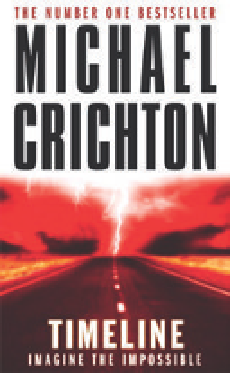Information Technology Reference
In-Depth Information
processing power and memory and are capable of communicating among them-
selves. Using a “predator-prey” agent-based program, the virtual agents are able
to act independently and learn from their environment. But the company has
a problem. A swarm of these nanodevices has escaped from the manufacturing
facility in the Nevada desert and is behaving very aggressively:
The camera now showed a ground-level view of the dust cloud as it swirled
towards us. But as I watched I realized it wasn't swirling like a dust devil.
Instead, the particles were twisting one way, then another, in a kind of
sinuous movement. They were definitely swarming. “Swarming” was a term
for the behavior of certain social insects like ants or bees, which swarmed
whenever the hive moved to a new site.… In recent years, programmers
had written programs that modeled this insect behavior. Swarm-intelligence
algorithms had become an important tool in computer programming.
27
Fig. 17.22. The cover of Michael
Crichton's
Timeline
, a novel that com-
bines quantum teleportation with time
travel. Medieval archaeology students
are transported back in time to rescue
their professor from a battlefield of
the Hundred Years War in France. As a
reference for the science in his story,
Crichton cites the topic
The Fabric of
Reality: The Science of Parallel Universes and
Its Implications
by quantum computing
pioneer David Deutsch.
How realistic are these scenarios? As we saw in
Chapter 15
, nanoengineering
is slowly becoming a reality but has a very long way to go to reach the level
of sophistication of these examples. Scientists are still in the early stages of
acquiring sufficient control over atomic matter to be able to assemble artificial
molecules and build complex nanosystems. Much more research is needed to
construct nanosystems that are able to run a program or exert some degree of
control over their environment. We are a long way from realizing Eric Drexler's
nanotechnology-driven utopia, with “assemblers” capable of building food
from raw atoms to banish hunger and with intelligent nanosurgical devices
that can be injected into the body to cure disease.
Quantum computing
What new computing technologies are left for science fiction to explore?
In his novel
Timeline
, Michael Crichton blends plausible quantum technology
with time travel and medieval history to form a compelling tale (
Fig. 17.22
).
The novel is set in New Mexico, close to the Los Alamos National Laboratory,
one of the leading U.S. centers of research into quantum cryptography and
quantum computing. The action switches between an archaeological excava-
tion site in the French Dordogne and the headquarters of a high-tech start-up
company, International Technology Corporation (ITC) in New Mexico. The his-
tory professor leading the excavation is called back to ITC in the United States
to see the company president. Meanwhile, back in France, after several days
with no communication from him, his students at the excavation site unearth
an apparently medieval request for help from their professor! The company
flies the students to its New Mexico headquarters and explains that they want
to send the students back into the past to rescue their professor. The ITC execu-
tives attempt to explain the basics of time travel technology to the skeptical
students (
Fig. 17.23
):
Ordinary computers make calculations using two electron states, which are
designed one and zero. That's how all computers work, by pushing round
ones and zeros. But twenty years ago Richard Feynman suggested it might
be possible to make an extremely powerful computer using all thirty-two

Search WWH ::

Custom Search